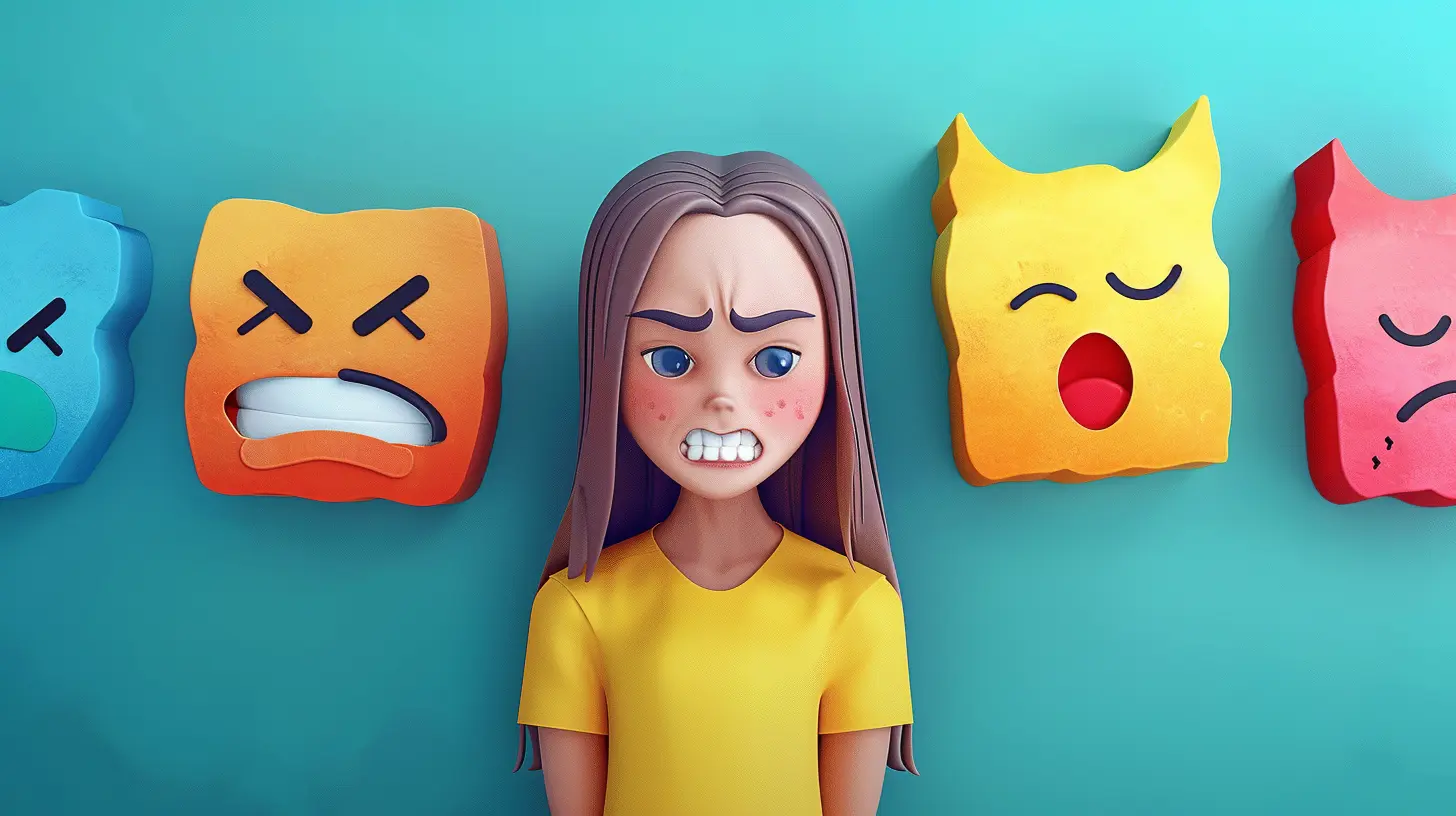How to Recognize Emotional Triggers and Respond Calmly
9 September 2025
Ever felt like someone flipped a switch inside you, and suddenly, you're boiling with anger or drowning in sadness? Yeah, we've all been there. That inner twist, that unexpected surge of emotion — that’s usually your emotional trigger kicking in. These triggers can sneak up on us in the middle of a conversation, during family dinners, scrolling through social media, or even just thinking of an old memory.
The good news? You’re not powerless. You can learn to spot these emotional landmines and defuse them before they blow things out of proportion. Let’s break this down together — no textbook jargon, just real talk — about how to recognize emotional triggers and respond calmly (instead of snapping like a dry twig).
What Are Emotional Triggers, Really?
Emotional triggers are those pesky reactions tied to past experiences, beliefs, or pain points. They're like little buttons that, when pressed, send your mind and body into overdrive. One minute everything’s chill, the next, your heartbeat races and your thoughts spiral. Sound familiar?Triggers can be words, actions, sounds, smells — anything really. The thing is, they often hit a nerve linked to something deeper — a fear, a past wound, or an unmet need.
Examples of Emotional Triggers:
- Being ignored or interrupted (Cue: “Why doesn’t anyone listen to me?”)- Feeling judged or criticized
- Rejection or abandonment
- Being told you’re “too sensitive”
- Environments that remind you of trauma or conflict
Sometimes, you’re aware of your triggers. Other times, they catch you completely off guard. That’s where emotional awareness comes into play.
Why Is It So Hard to Stay Calm When Triggered?
Here’s the truth: when you're triggered, your brain isn't exactly in 'rational thinking' mode.What’s actually happening behind the scenes is this — your amygdala (the fear center of your brain) hijacks control. It’s like an alarm system that’s been wired wrong. Instead of calmly assessing the situation, it screams “DANGER!” even when there’s no real threat.
So instead of responding thoughtfully, you react. Instantly. Emotionally. And usually in a way you regret later.
You might lash out, shut down, cry, panic, or start a fight. Sound dramatic? Maybe. But that’s just your brain trying to protect you the only way it knows how.
The First Step: Spot the Trigger Before It Hits
Recognizing a trigger in the moment is like catching a wave mid-rise — tricky but not impossible.Here are some signs that you're being triggered:
- Sudden change in mood (anxiety, anger, sadness)
- Physical symptoms — fast heartbeat, sweaty palms, shallow breathing
- A strong impulse to react or withdraw
- Racing thoughts or flashbacks
- Feeling out of control or overwhelmed
You might think, “Wow, that escalated quickly.” That’s your cue. Your body and emotions are talking — now you just have to start listening.
Step-by-Step Guide to Recognizing Your Emotional Triggers
1. Reflect on Past Reactions
Let’s start with a little self-inventory. Think back to the last time you lost your cool or got super emotional out of nowhere. What triggered it?Ask yourself:
- What was said or done?
- Who was involved?
- How did I feel in that moment? (Not just angry — dig deeper. Ashamed? Rejected? Hurt?)
- Where do I think that emotion really comes from?
You might start noticing a pattern. And that pattern? That’s your key to understanding your triggers.
2. Name the Emotion
This may sound simple, but labeling your feelings helps you process them.Try using:
“I’m feeling __ because __.”
For example: "I'm feeling angry because I felt ignored when I shared my idea."
Naming your emotion gives you power over it. It’s like shining a flashlight in a dark room — suddenly, things look a lot less scary.
3. Connect the Dots
Most emotional triggers are rooted in past pain. Maybe being ignored now reminds you of being overlooked as a child. Or being criticized brings back memories of being judged harshly by a parent.Understanding the “why” doesn’t excuse your emotional outburst — but it gives it context. And with context, comes compassion (for yourself and others).
How to Respond Calmly (Instead of Blowing Up)
Okay, now we’ve hit the juicy part. So, you’re triggered. You feel that emotional storm brewing. How do you stay cool?Take a breath. Literally. Then try these steps:
1. Pause Before You React
This sounds way easier than it is, right? But it makes all the difference.Think of your reaction like an email. Ever typed a heated response and hit “Send” too soon? Emotional reactions are like that. So, hit “Save as Draft” instead.
Count to 10. Walk away. Sip some water. Give your body time to cool down so your brain can catch up.
2. Ground Yourself
Anchoring your awareness to the present moment can stop your mind from spiraling.Try this quick grounding technique:
- Name 5 things you see
- 4 things you can touch
- 3 things you hear
- 2 things you can smell
- 1 thing you can taste
It pulls you out of the emotional cloud and back into the now.
3. Breathe It Out
Breathing is your secret weapon. Deep, intentional breaths calm your nervous system and help reset your fight-or-flight mode.Try: Inhale for 4, hold for 4, exhale for 6. Repeat a few times until you feel your body soften.
4. Respond, Don’t React
Once you’ve calmed down a bit, it’s time to express yourself — kindly and clearly.Use “I” statements instead of “You always” accusations.
Say: “I felt hurt when I didn’t feel heard,” instead of “You never listen.”
This keeps the conversation open instead of turning it into a battlefield.
5. Set Boundaries When Needed
Some triggers are connected to unhealthy environments or relationships. If someone constantly presses your emotional buttons, boundaries are necessary.Setting boundaries doesn’t make you mean — it makes you self-aware and protective of your peace.
Bonus Tips to Build Emotional Resilience
Learning to handle emotional triggers is a lifelong journey, but you can build your emotional muscles starting now.1. Journal Regularly
Journaling helps unload emotional clutter. It makes those invisible triggers visible. Plus, it’s a safe place to vent without consequences.2. Practice Mindfulness
Mindfulness teaches you to sit with your feelings without running from them. Over time, it helps you become more aware of your thoughts and patterns.Apps like Headspace or Calm can help get you started.
3. Engage in Therapy
If certain triggers seem too intense or confusing, therapy can be a game-changer. A good therapist helps unpack your trauma, explore your past, and guide you toward healthier reactions.It’s not weak to ask for help — it’s brave.
4. Take Care of Your Body
It’s wild how much your body affects your mind. Get enough sleep. Eat something nourishing. Move your body. You’re more emotionally grounded when your body isn’t running on fumes.So, What’s the Takeaway?
You’re not “too sensitive.” You’re human.Everyone has emotional triggers, but not everyone knows how to deal with them. The fact that you’re reading this means you’re already on the right path.
Recognizing your emotional triggers is like learning a new language — the language of your inner world. And when you learn to speak it, everything else starts making a lot more sense.
Remember, it’s okay to feel things deeply. But when you learn to pause, breathe, and choose your response, that’s when the real magic happens.
You’re not the reaction. You’re the awareness behind it. And that awareness? That’s your superpower.
Frequently Asked Questions
What if I can’t avoid my emotional triggers?
It’s true — you can’t always control your environment. But you can control how you respond. Awareness, boundaries, and self-care go a long way.How long does it take to manage emotional triggers?
There’s no set timeline. It’s a process, and healing isn’t linear. Be patient with yourself, and celebrate the small wins along the way.Is it normal to not know your own triggers?
Absolutely. Many people go years without connecting the dots. Give yourself grace. Self-awareness takes time and effort — you're doing the work, and that matters.Final Thoughts
You don’t have to be perfect. You just need to be present.Learning how to recognize emotional triggers and respond calmly isn’t about never getting upset again — it’s about understanding the “why” behind your reactions and giving yourself tools to handle them better.
From now on, when that wave of emotion hits, you’ll know how to ride it — not drown in it.
You’ve got this.
all images in this post were generated using AI tools
Category:
Emotional IntelligenceAuthor:

Matilda Whitley
Discussion
rate this article
1 comments
Thor Romero
Awareness is the first step; embrace your emotions with compassion!
September 10, 2025 at 4:38 PM

Matilda Whitley
Absolutely! Embracing our emotions with compassion is key to recognizing and managing our triggers effectively. Thank you for your insight!


